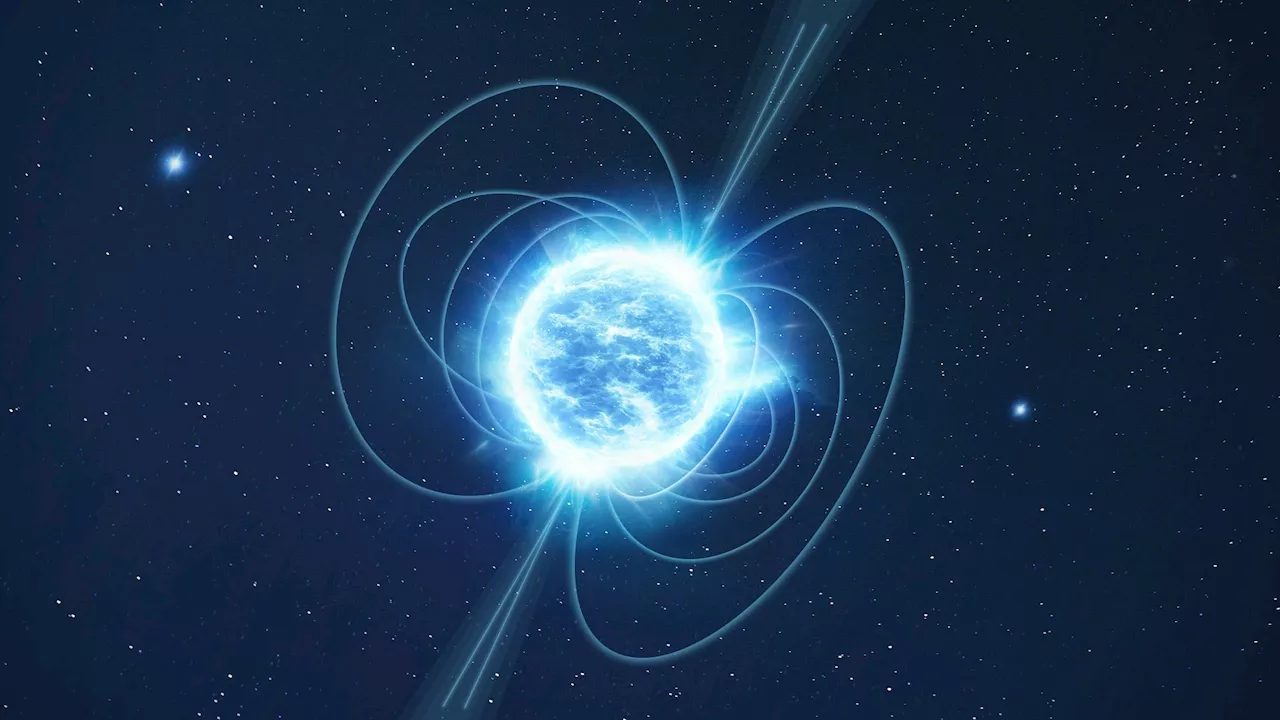Neutron star collisions create a strange, dense 'soup' of quarks and gluons in the aftermath of the smashup that scientists are studying.
An artist's impression of a neutron star merger as the two stars merge, change shape, and heat up. Courtesy: University of Warwick/Mark Garlick.
These weird stars are hugely dense and strange collections of neutrons. So, when two of them dance and merge, they change shape under the pressure of the merger. They also heat up. The conditions eventually change the states of matter in their cores. According to Professor Aleksi Vuorinen of the University of Helsinki, Finland, this is what astronomers think happens during neutron star mergers. However, he points out nobody completely understands those conditions and how quarks behave in them.
When neutron stars merge, obviously they mix and mingle their contents. Researchers want to know the viscosity of the material created in the merger. Essentially, this would be a measure of how strongly particle interactions would resist flowing. Or, think of it as measuring how “sticky” the flow of the quark soup would be. A thick quark soup would flow more slowly while a thin one would move faster.
United States Latest News, United States Headlines
Similar News:You can also read news stories similar to this one that we have collected from other news sources.
 Neutron-star mergers illuminate the mysteries of quark matterNeutron stars are the remnants of old stars that have run out of nuclear fuel and undergone a supernova explosion and a subsequent gravitational collapse.
Neutron-star mergers illuminate the mysteries of quark matterNeutron stars are the remnants of old stars that have run out of nuclear fuel and undergone a supernova explosion and a subsequent gravitational collapse.
Read more »
 What happens to the remains of neutron star mergers?In the aftermath of a collision of neutron stars, a new celestial object called a remnant emerges, shrouded in mystery. Scientists are still unraveling its secrets, including whether it collapses into a black hole and how quickly this might happen.
What happens to the remains of neutron star mergers?In the aftermath of a collision of neutron stars, a new celestial object called a remnant emerges, shrouded in mystery. Scientists are still unraveling its secrets, including whether it collapses into a black hole and how quickly this might happen.
Read more »
 Real-time, cost-effective monitoring of neutron beams used in boron neutron capture therapyResearchers from the Health Research and Technology Group at ANSTO and the University of Wollongong have developed a new device that could improve the quality control of accelerator-based boron neutron capture therapy, a promising radiation therapy for treating aggressive cancers.
Real-time, cost-effective monitoring of neutron beams used in boron neutron capture therapyResearchers from the Health Research and Technology Group at ANSTO and the University of Wollongong have developed a new device that could improve the quality control of accelerator-based boron neutron capture therapy, a promising radiation therapy for treating aggressive cancers.
Read more »
 How a Black Hole Could Eat a Neutron Star from the Inside OutSpace and astronomy news
How a Black Hole Could Eat a Neutron Star from the Inside OutSpace and astronomy news
Read more »
 First-Ever Sighting: Neutron Star’s Bizarre “Garden Sprinkler” Jet CapturedScience, Space and Technology News 2024
First-Ever Sighting: Neutron Star’s Bizarre “Garden Sprinkler” Jet CapturedScience, Space and Technology News 2024
Read more »
 'Mirror' nuclei help connect nuclear theory and neutron starsAdding or removing neutrons from an atomic nucleus leads to changes in the size of the nucleus. This in turn causes tiny changes in the energy levels of the atom's electrons, known as isotope shifts. Scientists can use precision measurements of these energy shifts to measure the radius of the nucleus of an isotope.
'Mirror' nuclei help connect nuclear theory and neutron starsAdding or removing neutrons from an atomic nucleus leads to changes in the size of the nucleus. This in turn causes tiny changes in the energy levels of the atom's electrons, known as isotope shifts. Scientists can use precision measurements of these energy shifts to measure the radius of the nucleus of an isotope.
Read more »
